Article
Omega 3
• Omega 3 is the name of a type of fat that is found in oil-rich fish and some plant oils and is also known as ‘n-3‘.
• Omega‐3 and omega‐6 fats are both polyunsaturated fatty acids.
• The main forms of omega‐3 are the “parent” molecule, Alpha Linolenic Acid (ALA), which can be found in a variety of plant based sources such as walnut, hemp, soy, flax and canola oil and the two longer‐chain omega‐3 molecules, docosahexaenoic acid (DHA) and eicosapentaenoic acid (EPA).
• DHA and EPA are “essential” fatty acids, which means that our bodies can’t
synthesise them and we need to consume them in our foods such as fish, nut and plant-based oils, such as canola oil and sunflower oils.
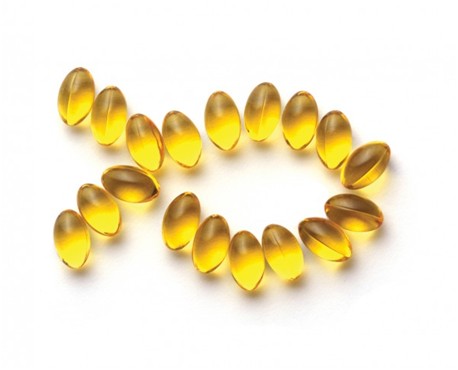
• A small percentage of the ALA consumed can be converted into DHA and EPA in our bodies but the richest source of these essential fatty acids is seafood.
Long-chain omega 3 fatty acids are needed for normal growth and development in the body, and are also required to maintain cardiovascular health and brain function. Therefore, everybody should be aiming to consume enough regularly to prevent deficiencies and to be healthy.
Since omega 3 essential fatty acids are needed for the membranes of all body cells their role in health is wide reaching: encompassing not only healthy heart and brain function but also playing an important role in the normal function of the eyes, the nervous system, the kidney, and the liver, in fact all body systems. Other functions also include the contraction of muscles and the dilation/constriction of blood vessels, blood clotting, and inflammatory processes.
Only consuming plant sources of essential fatty acids (i.e. ALA) means that the conversion process to the longer chain fats, DHA and EPA, will not be efficient therefore possibly requiring an additional source of omega 3 to maintain optimum intakes.
The main oil-rich fish available are: salmon, trout, mackerel, sardines, pilchards, herring, kipper, eel and whitebait, fresh, frozen or tinned. Tuna is only counted as an oily fish if it is fresh or frozen, as the tinned variety does have some oils, but not as much as the fresh one.
What are the types of omega-3 fatty acids?
ALA – ALA, or alpha-linolenic acid, is an 18-carbon chain and three cis double bonds. The first double bond is located in the n-3 position or at the omega end of the fatty acid. Thus, ALA is considered a polyunsaturated n-3 (omega-3) fatty acid.
EPA – EPA or eicosapentaenoic acid contains a 20-carbon chain and five cis double bonds; the first double bond is located at the third carbon from the omega end. Therefore, EPA also is considered an omega-3 fatty acid.
DHA – DHA or docosahexaenoic acid is a 22-carbon chain with six cis double bonds; the first double bond is located at the third carbon from the omega end of the fatty acid. Therefore, DHA is also considered an omega-3 fatty acid.
What are the sources of these omega-3 fatty acids?
ALA – Flaxseed, canola and soybean oils, and walnuts
EPA and DHA – Fatty fishes such as mackerel, herring, salmon, tuna, and trout
Omega 3 Health Benefits
- Builds better brain functioning. Pregnant and nursing mothers can have a great impact on the intelligence and happiness of their babies by supplementing with fish oil. For adults, omega 3 improves memory, recall, reasoning and focus. You'll swear you're getting younger and smarter.
- Decreases pain and inflammation. Omega 3 fatty acids, particularly EPA, have a very positive effect on your inflammatory response. Through several mechanisms, they regulate your body's inflammation cycle, which prevents and relieves painful conditions like arthritis, allergy rhinitis, prostatitis, cystitis and anything else with an "itis" ending.
- Improves cardiovascular health. Omega 3 fatty acids have also been proven to work wonders for your heart and the miles and miles of arteries and veins that make up your cardiovascular system. They help lower cholesterol, triglycerides, bad LDLs and blood pressure, while at the same time increasing good HDL cholesterol. This adds years to your life expectancy. Omega 3 with EPA and DPA is your best defence.
- Reduces heart attack and strokes. When plaque builds up on arterial walls and then breaks loose, it causes a thrombosis, which is a fancy way of saying blood clot. If a clot gets stuck in the brain, it causes a stroke and when it plugs an artery, it causes a heart attack. Research shows omega 3 fatty acids break up clots before they can cause any damage.
- Reduces depression and psychosis. Making you smarter is not all omega-3 does for your brain. Psychiatry department researchers at the University of Sheffield, along with many other research studies, found that omega 3 fish oil supplements "alleviate" the symptoms of depression, bipolar and psychosis
- Increases both male and female fertility. Studies show that infertility is directly related to the amount of fish oil you consume. Fish oil balances hormones, improves hormonal levels and increases blood flow to the uterus. The more Omega 3 fatty acids you get the greater your odds of conceiving.
- Improves all around pregnancy health. Omega 3 fish oil has been shown to reduce the danger of pregnancy preeclampsia (high blood pressure), premature birth and postpartum depression. Fish oil fatty acids also facilitate a healthy placental blood flow and the efficient exchange of nutrients and oxygen between mother and baby and greatly contributes to proper brain development, increasing the child's intelligence.
- Lowers incidence of childhood disorders. Just to show how fish oil fatty acids leave nobody out, studies show that children (and adults) with ADD and ADHD experience a greatly improved quality of life. And those with dyslexia, dyspraxia and compulsive disorders have gotten a new lease on life thanks to omega 3 oils.
- Decreases chances of osteoporosis. Having high levels of fish oil fatty acids has been shown to lower the risk of osteoporosis, which is an especially high for women after menopause.
- Reduces Breast, Colon and Prostate Cancer. And finally, omega 3 fish oil has been shown to help prevent three of the most common forms of cancer - breast, colon and prostate. Science tells us that omega 3s accomplish these in three ways. They stop the alteration from a normal healthy cell to a cancerous mass, inhibiting unwanted cellular growth and causing apoptosis, or cellular death, of cancer cells.

Omega 3 Foods
• Grains
• Spirulina
• Brazil Nuts
• Hempseed Oil
• Mustard Seeds
• Pumpkin Seeds
• Chia Seed Oil
• Wheat Germ Oil
• Canola Oil (Rapeseed)
• Green Leafy Vegetables
• Raw Walnuts & Walnut Oil
• Flaxseeds or Flaxseed Oil
Collagen
What is collagen?
Collagen is a group of naturally occurring proteins.
In nature, it is found exclusively in animals, especially in the flesh and connective tissues of mammals. It is the main component of connective tissue, and is the most abundant protein in mammals, making up about 25% to 35% of the whole-body protein content.
Collagen, in the form of elongated fibrils, is mostly found in fibrous tissues such as tendon, ligament and skin, and is also abundant in cornea, cartilage, bone, blood vessels, the gut, and intervertebral disc.
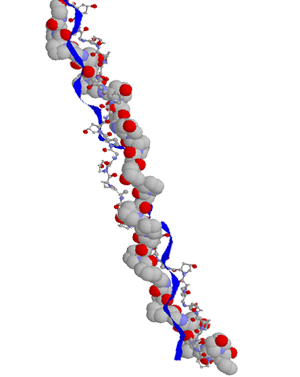 In muscle tissue it serves as a major component of endomysium. Collagen constitutes 1% to 2% of muscle tissue, and accounts for 6% of the weight of strong, tedious muscles. Gelatin, which is used in food and industry, is collagen that has been irreversibly hydrolyzed.
In muscle tissue it serves as a major component of endomysium. Collagen constitutes 1% to 2% of muscle tissue, and accounts for 6% of the weight of strong, tedious muscles. Gelatin, which is used in food and industry, is collagen that has been irreversibly hydrolyzed.
Collagen has great tensile strength and functions in a manner that is very different from many other types of proteins. For example, it can be found both inside and outside of cells. Collagen fibres are important in contributing to the external structure of cells. However, they are present on the inside of some cells as well.
Collagen works hand-in-hand with elastin in supporting the body’s tissues. Basically, it gives body tissues form and provides firmness and strength; elastin gives the same body tissues much need flexibility. This combination of collagen and elastin is very important in many parts of the body, including, but not limited to, the lungs, bones, and tendons. Even the blood vessels rely on both collagen and elastin.
Often, collagen is discussed in relation to the skin. It works with keratin to provide the skin with strength, flexibility, and resilience. As people age, however, collagen degradation occurs, leading to wrinkles. As such, it is an important substance for those looking for ways to fight the visible effects of aging on the skin. Some skincare professionals actually advise people on ways to stimulate the production of collagen in skin cells.
In addition to being so important in the body, collagen also has many medical uses. It is used in some cosmetic surgery procedures and is sold as a supplement created for joint mobility. It is even used in treating and managing serious burns. For this purpose, it is used in creating man-made skin substitutes.
Since collagens are so important within the body, it stands to reason that collagen deficiencies can be problematic. In fact, there are some genetic diseases that are associated with collagen deficiencies. For example, osteogenesis imperfecta, commonly referred to as brittle bone disease, results from a significantly decreased level of collagen. It can also result from the presence of collagen that is of lower quality than normal.
Types of Collagen
A variety of types of collagen exist in varying quantities in almost all of our organs. When using collagen to enhance the appearances of our skin, we must thus take into consideration not only the amount, but also the type of collagen we choose.
|
Important Types of Collagen
|
|
|
Type I |
The most prevalent type, located in our tendons, bones, skin, and other tissues, particularly scars. |
|
Types II, IX, X & XI |
Merely cartilage, located in various places throughout our bodies. |
|
Type III |
Found in quickly-growing tissue, such as that found in wounds in the early stages of repair, and is often replaced later on by the stronger and tougher Type I collagen. |
|
Type IV |
The filtration membrane of our capillaries, known as basal lamina. |
|
Types V and VI |
Similar to Type I, and generally are not found without it, providing support to normal Type I collagen functions. |
|
Type VII |
Known as epithelia and it lines various tracts of our body, such as the GI and urinary tracts. |
|
Type VIII |
Lines our blood vessels. |
|
Type XII |
Interacts with Types I and III collagen, and can always be found alongside them. |
Types I and III collagen are the most prevalent in our skin, controlling most of our skin’s mechanical properties. Though other types of collagen are less abundant in our skin, and often play a less clear, more supportive role to types I and III collagen, each type serves an important function in the maintenance of our skin.
Uses of Collagen
Collagen is one of the long, fibrous structural proteins whose functions are quite different from those of globular proteins such as enzymes.
Tough bundles of collagen called ''collagen fibres’' are a major component of the extracellular matrix that supports most tissues and gives cells structure from the outside, but collagen is also found inside certain cells. As you age, your body is less able to manufacture a sufficient amount of collagen. Collagen can help maintain your body's repair process.
- IMPROVE CIRCULATION
Collagen can strengthen blood vessels and improve their elasticity. Collagen fortifies your blood vessels to improve circulation throughout the body. Blood and nutrients are delivered to your skin, resulting in healthy, radiant and youthful-looking skin.
- PROMOTE HEALING OF INJURIES
Collagen is needed to repair and rebuild connective tissue to encourage strong muscles, skin and joints. Collagen also strengthens the structure of bones, tendons, cartilage and ligaments. Collagen can encourage muscle mass to regenerate and help athletes recover from sports-related injuries faster.
- RELEIVE ARTHRITIS PAIN
Arthritis is an inflammation in the joints that can cause limited and painful mobility in your hand, arm, shoulder, hip and knee joints. Collagen may increase your joint mobility and reduce arthritis pain.
Collagen helps to keep joints fluid and mobile, but the protein gradually disappears from joints as you age. Taking collagen supplements may help treat joint pain associated with arthritis or aging. Increased levels of collagen could improve your joint's mobility while reducing the pain associated with joint movement.
- REDUCE APPEARANCE OF CELLULITE
Cellulite occurs when fatty tissue pushes upward through fibers into the upper layer of skin. The result is a dimpled appearance of the skin.
Collagen work from the inside of your body to reduce the appearance of cellulite. Collagen promotes your body to rebuild and repair the fibers that cause cellulite to appear.
- REDUCE WRINKLES
As collagen depletes, wrinkles and lines form in those places where the skin moves most--such as joints, forehead and lips. Wrinkles and skin blemishes benefit the most from collagen. Aging is the main cause of wrinkles. However, environment, pollutants and rays from the sun all contribute. Regularly taking collagen encourages your skin to become soft and supple.
- IMPROVE HAIR
Collagen is a major component in hair growth, because it fights off free radicals that can affect your hair's texture, growth and thickness. Restoring collagen in the hair shaft can improve hair growth. Collagen strengthen hair and increase the diameter of individual hairs, giving your hair an overall fuller appearance.
- SCAR TREATMENTS
Collagen injections are sometimes used in a treatment called "tissue fillers." These injections place a pocket of collagen underneath a depressed scar that may result from acne.
This raises the depressed skin up to the same level as the rest of your skin, minimizing or eliminating the appearance of the scar. The downside to this benefit of collagen is the temporary nature of tissue fillers—the collagen's effect will wear off after six months.
Collagen injections are sometimes used in a simple lip-plumping procedure. Contrary to the claims made by some topical skin products, though, collagen is not beneficial when applied to the skin—the molecule is too large to penetrate the selective membrane of your epidermis.
- NUTRITIONAL SUPPLEMENT
Because collagen is a protein, it is made up of different amino acids. These small acid chains are strung together in various sequences to form all proteins necessary to your body's health.
Collagen contains eight of the nine amino acids critical to your body's health—from these amino acids, your body can form all proteins essential to your functioning.
There are 20 amino acids in total, but not all are necessary for your health. Because of this protein benefit, collagen is sometimes featured in bodybuilding or muscle-gain supplements to give your muscles the fuel needed to grow in mass.

Other Uses
Gelatin is produced from collagen and is used in many industries. The most common use of gelatin is in food. Gelatin is used in photographic film and to bind the abrasive particles and the paper in sandpaper. Because it is readily accepted by the body, gelatin is often used in pharmaceutical production.
Tips
Gelatin is the most pure protein available and contains all the amino acids needed by body cells and tissues.
Add gelatin to the diet to improve the condition of hair and nails.
Tips to Prevent Breast Cancer
1. Maintain a healthy body weight (BMI less than 25) throughout your life. Weight gain in midlife, independent of BMI, has been shown to significantly increase breast cancer risk. Additionally, and elevated BMI has been conclusively shown to increase the risk of post-menopausal breast cancer.
2. Minimize or avoid alcohol. Alcohol use is the most well established dietary risk factor for breast cancer. The Harvard Nurses' Health study, along with several others, has shown consuming more than one alcoholic beverage a day can increase breast cancer risk by as much as 20-25 percent.
3. Consume as many fruits and vegetables as possible. Eat seven or more servings daily. The superstars for breast cancer protection include all cruciferous vegetables (broccoli, cabbage, brussels sprouts, cauliflower) ; dark leafy greens (collards, kale, spinach) ; carrots and tomatoes. The superstar fruits include citrus, berries and cherries. Note: it is best to eat cruciferous vegetables raw or lightly cooked, as some of the phytochemicals believed to offer protection against breast cancer are destroyed by heat.
4. Exercise regularly the rest of your life. Many studies have shown that regular exercise provides powerful protection against breast cancer. Aim for 30 minutes or more of moderate aerobic activity (brisk walking) five or more days a week. Consistency and duration, not intensity, are key!
5. Do your fats right! The type of fat in your diet can affect your breast cancer risk. Minimize consumption of omega-6 fats (sunflower, safflower, corn and cottonseed oils), saturated fats and trans fats. Maximize your intake of omega-3 fats, especially from oily fish (salmon, tuna, mackerel, sardines, lake trout and herring). Consume monounsaturated oils (canola, olive oil, nuts/seeds, avocados) as your primary fat source, as these foods have potential anticancer properties. Specifically, canola oil is a good source of omega-3 fats; extra virgin olive oil is a potent source of antioxidant polyphenols, including squalene; and nuts and seeds provide you with the cancer protective mineral, selenium.
6. Do your carbs right! Minimize consumption of the high glycemic index, "Great White Hazards" - white flour, white rice, white potatoes, sugar and products containing them. These foods trigger hormonal changes that promote cellular growth in breast tissue. Replace these "wrong" carbs with whole grains and beans/legumes. Beans/legumes because of their high fiber and lignan content are especially special.
7. Consume whole food soy products regularly, such as tofu, tempeh, edamame, roasted soy nuts, soy milk and miso. Only consume organic, non-GMO (genetically modified) soy. Epidemiologic studies have shown a positive association between soy consumption and reduced breast cancer risk.
8. Minimize exposure to pharmacologic estrogens and xeno-estrogens. Do not take prescription estrogens unless medically indicated. Lifetime exposure to estrogen plays a fundamental role in the development of breast cancer. Also avoid estrogen-like compounds found in environmental pollutants, such as pesticides and industrial chemicals. Buy organic produce if you can afford it; otherwise, thoroughly wash all non-organic produce. Minimize exposure to residual hormones found in non-organic dairy products, meat and poultry.
9. Take your supplements daily. A multivitamin, 500-1,000 mg of vitamin C in divided doses, 200-400 IUs of vitamin E as mixed tocopherols, and pharmaceutical grade fish oil. Also take 200 mcg of the mineral selenium or eat one to two Brazil nuts as an alternative. If you have a chronic medical condition or take prescription drugs, consult your physician first.
10. Maintain a positive mental outlook. Engage in self-nurturing behaviors regularly. Develop rich, warm and mutually beneficial relationships with family and friends. Get adequate sleep (7-8 hours per night). The mind-body associations with breast cancer are significant.
Bra Size and Breast Cancer
Breast Cancer Linked with Bra Size
Breast cancer is a leading cancer among women accounting for one-third of all cancers. Increasingly, age group affected by breast cancer is becoming younger. Forty-eight per cent of incidences are in between 25-50 years of age.
Researchers with a commercial DNA company have linked a larger breast size with seven genetic factors that raise the risk for developing breast cancer.
A study of 16,000 women found genetic mutations associated with breast size were also linked to the disease.
Dr Nicholas Eriksson of the California-based genetics firm 23andMe said it was the first substantial link between breast size and cancer, but added much more research was needed before it could be considered concrete.
but added much more research was needed before it could be considered concrete.
He said: ‘Our results identify genetic variants that have an effect on both breast cancer and natural variation in breast size.
‘While the precise relationships between breast size, density, obesity and breast cancer remain difficult to untangle, understanding the biology . . . may aid in the development of novel screening tools.’
He said one of the three mutations regulates the activity of the female sex hormone oestrogen, which can trigger the growth of both breasts and tumours.
While research has linked breast density – the amount of non-fat tissue – to an increased risk of cancer, there has been little evidence of a link with breast size before.
Another is located in a region of a woman’s genome that often shows abnormalities in those with certain types of breast cancer.
The link was seen regardless of the women’s age, pregnancy and breastfeeding history and genetic ancestry, according to the study published in the journal BMC Medical Genetics.
Little is known about the biology of breast size, which scientists believe is only half hereditary, but high oestrogen levels are known to be a risk factor for breast cancer.
There are many different forms of breast cancer, which scientists believe could be treated as ten different illnesses. Weight, alcohol consumption and a strong family history are all risk factors.
A 2006 study by the Harvard School of Public Health on 90,000 pre-menopausal subjects found larger breast size in slim young women gave them a higher risk of breast cancer in later life.
Those with a body mass index of 25 or less and a bra size of D or larger had a significantly higher risk of breast cancer than those of the same weight with a cup size A or smaller, they found.
However, the study’s lead author, Karin Michels, said the findings did not mean those with small breasts could assume they were safe and urged all women to go for breast cancer screening.
Click here to Find More about "Tips For Preventing Breast Cancer"
Myasthenia-gravis (MG)
What is Myasthenia-Gravis(MG)?
Myasthenia Gravis (pronounced My-as-theen-ee-a Grav-us) comes from the Greek and Latin words meaning "grave muscular weakness”. Myasthenia Gravis (MG) is a neuromuscular autoimmune disease that affects the use of muscles - normal communication between the nerve and the muscle is interrupted, leaving the muscle weak and fatigued.
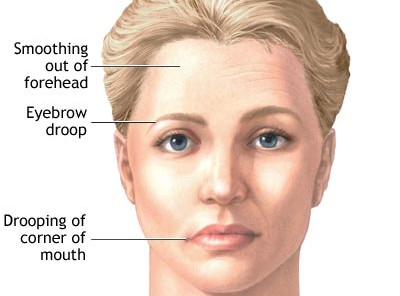 The hallmark of myasthenia gravis is muscle weakness that increases during periods of activity and improves after periods of rest. Certain muscles such as those that control eye and eyelid movement, facial expression, chewing, talking, and swallowing are often, but not always, involved in the disorder. The muscles that control breathing and neck and limb movements may also be affected.
The hallmark of myasthenia gravis is muscle weakness that increases during periods of activity and improves after periods of rest. Certain muscles such as those that control eye and eyelid movement, facial expression, chewing, talking, and swallowing are often, but not always, involved in the disorder. The muscles that control breathing and neck and limb movements may also be affected.
Myasthenia Gravis occurs in all races, both genders, and at any age. MG is not thought to be directly inherited nor is it contagious. It does occasionally occur in more than one member of the same family.
The voluntary muscles of the entire body are controlled by nerve impulses that arise in the brain. These nerve impulses travel down the nerves to the place where the nerves meet the muscle fibers. Nerve fibres do not actually connect with muscle fibres. There is a space between the nerve ending and muscle fibre; this space is called the neuromuscular junction.
When the nerve impulse originating in the brain arrives at the nerve ending, it releases a chemical called acetylcholine. Acetylcholine travels across the space to the muscle fibre side of the neuromuscular junction where it attaches to many receptor sites. The muscle contracts when enough of the receptor sites have been activated by the acetylcholine.
In MG, there can be as much as an 80% reduction in the number of these receptor sites. The reduction in the number of receptor sites is caused by an antibody that destroys or blocks the receptor site.
Antibodies are proteins that play an important role in the immune system. They are normally directed at foreign proteins called antigens that attack the body. Such foreign proteins include bacteria and viruses. Antibodies help the body to protect itself from these foreign proteins.
For reasons not well understood, the immune system of the person with MG makes antibodies against the receptor sites of the neuromuscular junction. Abnormal antibodies can be measured in the blood of many people with MG.
The antibodies destroy the receptor sites more rapidly than the body can replace them. Muscle weakness occurs when acetylcholine cannot activate enough receptor sites at the neuromuscular junction.
Symptoms of Myasthenia-Gravis (MG)
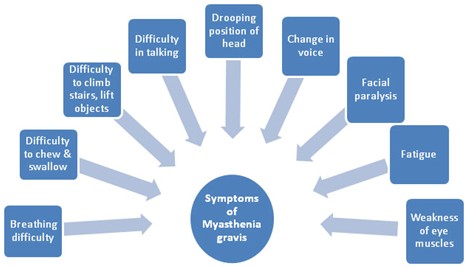
• Difficulty in Breathing; due to weakening of chest wall muscles
• Difficulty to chew and swallow
• Difficulty in climbing stairs, lifting objects
• Difficulty in talking
• Sagging head position
• Facial paralysis
• Fatigue
• Hoarseness or changing voice
• Weakness of the eye muscles causes Double vision and drooping of eyelids
Myasthenia Gravis Causes
Myasthenia Gravis (MG) is all about muscles failing to contract.
Every time your body moves, whether you're walking, talking or breathing, a muscle contracts. There are three general types of muscles
Fat and Fatty Acids
Fat is a major source of fuel energy for the body. Fat is a nutrient that is an important source of calories. One gram of fat supplies 9 calories - more than twice the amount we get from carbohydrates or protein. Fat also is needed to carry and store essential fat-soluble vitamins, like vitamins A and D. There are two basic types of fat. They are grouped by their chemical structure. Each type of fat is used differently in our bodies and has a different effect on our health.
When we eat a lot of high fat foods, we get a lot of calories. With too many calories, we may gain weight. Eating too much fat may also increase the risk of getting diseases like cancer, heart disease, high blood pressure or stroke. Health experts recommend that we should get no more than 30% of our calories from fat to reduce our risk of getting these diseases.
Fat is found in many foods. Some of the fat that we eat comes from the fat we add in cooking or spread on breads, vegetables or other foods. A lot of fat is hidden in foods that we eat as snacks, pastries or prepared meals.
We can reduce the amount of fat we eat by cutting down on the fat that we add in cooking or spread on foods. We can eat skim milk and low fat cheeses instead of whole milk and cheese. We can also use less fat, oil, butter, and margarine. Another way to cut down on fat is to drain and trim meats and take the skin off poultry. We can also read labels and compare the amount of fat in foods to make lower fat choices.
Why do we need fats?
Although fats have received a bad reputation for causing weight gain but still some fat is essential for survival. According to the Dietary Reference Intakes published by the USDA 20% - 35% of calories should come from fat. We need this amount of fat for:
Body to use vitamins: Vitamins A, D, E, and K are fat-soluble vitamins, meaning that the fat in foods helps the intestines absorb these vitamins into the body.
Brains development:Fat provides the structural components not only of cell membranes in the brain, but also of myelin, the fatty insulating sheath that surrounds each nerve fiber, enabling it to carry messages faster.
Energy: Gram for gram fats is the most efficient source of food energy. Each gram of fat provides nine calories of energy for the body, compared with four calories per gram of carbohydrates and proteins.
Healthier skin: One of the more obvious signs of fatty acid deficiency is dry, flaky skin. In addition to giving skin its rounded appeal, the layer of fat just beneath the skin acts as the body's own insulation to help regulate body temperature.
Healthy cells: Fats are a vital part of the membrane that surrounds each cell of the body. Without a healthy cell membrane, the rest of the cell couldn't function.
Making hormones: Fats are structural components of some of the most important substances in the body, including prostaglandins, hormone-like substances that regulate many of the body's functions. Fats regulate the production of sex hormones, which explains why some teenage girls who are too lean experience delayed pubertal development and amenorrhea.
Pleasure: Besides being a nutritious energy source, fat adds to the appealing taste, texture and appearance of food. Fats carry flavor.
Protective cushion for our organs: Many of the vital organs, especially the kidneys, heart, and intestines are cushioned by fat that helps protect them from injury and hold them in place.
Types of Fat
Dietary fats are classified by their structure. Different types of fats react differently inside the body. Saturated fats (found mostly in animal products) increase blood cholesterol, which is a risk factor in coronary heart disease. Mono-unsaturated and polyunsaturated fats tend to lower blood cholesterol.
Dietary fats and blood cholesterol
There are two types of blood cholesterol: low density lipoprotein (LDL) cholesterol and high density lipoprotein (HDL) cholesterol. LDL is considered the ‘bad’ cholesterol because it contributes to the narrowing and silting up of the arteries, which can lead to heart disease and stroke. HDL cholesterol is considered to be the ‘good’ cholesterol because it actually carries cholesterol from the blood back to the liver, reducing the risk of cardiovascular disease.
Groups of fats
Each group of fats behaves differently inside the body. Dietary fat can be classified into three groups:
• Saturated
• Un-Saturated Fats
• Trans Fats or Hydrogenated Fats
Saturated Fats
Saturated fats are the animal-derived 'hard' fats such as butter, lard and fat in meat (and used in many processed foods). But they are also found in some plant-based sources such as coconut, palm and palm kernel oils. These fats are solid at room temperature. Saturated fats directly raise total and LDL (bad) cholesterol levels. These are the fats to reduce in the diet.
Unsaturated fats
Monounsaturated fats and polyunsaturated fats are two types of unsaturated fatty acids. They are derived from vegetables and plants.
Monounsaturated fats are liquid at room temperature but begin to solidify at cold temperatures. This type of fat is preferable to other types of fat and can be found in olives, olive oil, nuts, peanut oil, canola oil and avocados. Some studies have shown that these kinds of fats can actually lower LDL (bad) cholesterol and maintain HDL (good) cholesterol.
Polyunsaturated fats are also liquid at room temperature. These are found in safflower, sesame, corn, cottonseed and soybean oils. This type of fat has also been shown to reduce levels of LDL cholesterol, but too much can also lower your HDL cholesterol.
Trans Fats or Hydrogenated Fats
Trans fats are produced when liquid oil is made into a solid fat. This process is called hydrogenation. Trans fats act like saturated fats and can raise your cholesterol level. Trans fats are listed on the label, making it easier to identify these foods. Unless there is at least 0.5 grams or more of Trans fat in a food, the label can claim 0 grams. If you want to avoid as much Trans fat as possible, you must read the ingredient list on food labels. Look for words like hydrogenated oil or partially hydrogenated oil. Select foods that either does not contain hydrogenated oil or where liquid oil is listed first in the ingredient list.
Sources of Trans fat include:
Processed foods like snacks (crackers and chips) and baked goods (muffins, cookies and cakes) with hydrogenated oil or partially hydrogenated oil
Stick margarines
Shortening
Some fast food items such as French fries
Omega 6
OMEGA‐6
Omega-6 fatty acids are considered essential fatty acids: They are necessary for human health but the body can' t make them -- you have to get them through food. Along with omega-3 fatty acids, omega-6 fatty acids play a crucial role in brain function, as well as normal growth and development. Also known as polyunsaturated fatty acids (PUFAs), they help stimulate skin and hair growth, maintain bone health, regulate metabolism, and maintain the reproductive system.
There are several different types of omega-6 fatty acids, and not all promote inflammation. Most omega-6 fatty acids in the diet come from vegetable oils, such as linoleic acid (LA). Be careful not to confuse this with alpha-linolenic acid (ALA), an omega-3 fatty acid. Linoleic acid is converted to gamma-linolenic acid (GLA) in the body. It is then further broken down to arachidonic acid (AA). GLA is found in several plant based oils, including evening primrose oil (EPO), borage oil, and black currant seed oil.
GLA may actually reduce inflammation. Much of the GLA taken as a supplement is converted to a substance called DGLA that fights inflammation. Having enough of certain nutrients in the body (including magnesium, zinc, and vitamins C, B3, and B6) helps promote the conversion of GLA to DGLA.
Fish oil
What is Fish oil
Fish oil is derived from the tissues of oily fish and is a source of omega-3 (EPA) Eicosapentaenoic acid and (DHA) Docosahexaenoic acid essential fatty acids. These fats are considered 'essential' because they cannot be synthesised by the body and must be supplied through the diet or via supplementation.
What is the difference between omega-3 and fish oil?
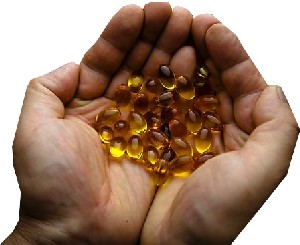 Omega-3 is a component of fish oil. The omega-3 fatty acids found in fish oil are Eicosapentaenoic Acid (EPA) and Docosahexaenoic Acid (DHA). It is the EPA+DHA content of fish oil which provide many of its therapeutic benefits. While omega-3 can be found in foods such as linseeds and wheat-germ, combined omega-3 fatty acids eicosapentaenoic acid and docosahexaenoic acid are available in large amounts in deep-sea cold water oily fish such as salmon, anchovies, mackerel and sardines.
Omega-3 is a component of fish oil. The omega-3 fatty acids found in fish oil are Eicosapentaenoic Acid (EPA) and Docosahexaenoic Acid (DHA). It is the EPA+DHA content of fish oil which provide many of its therapeutic benefits. While omega-3 can be found in foods such as linseeds and wheat-germ, combined omega-3 fatty acids eicosapentaenoic acid and docosahexaenoic acid are available in large amounts in deep-sea cold water oily fish such as salmon, anchovies, mackerel and sardines.
Grams of omega-3 fatty acids per 3oz (85g) serving of popular fish
| Tuna (canned, light) | 0.17-0.24 |
| Tuna | 0.21–1.1 |
| Tilefish | 0.90 |
| Swordfish | 0.97 |
| Shark | 0.83 |
| Salmon | 1.1–1.9 |
| Red snapper | 0.29 |
| Pollock | 0.45 |
| Orange roughy | 0.028 |
| Mahi mahi | 0.13 |
| King mackerel | 0.36 |
| Halibut | 0.60–1.12 |
| Grouper | 0.23 |
| Flounder | 0.48 |
| Cod | 0.15–0.24 |
| Catfish | 0.22–0.3 |
Types of Omega fatty Acids
1. Omega-3 fatty acids are found in both plant and animals but the most concentrated dietary source of combined omega-3s EPA and DHA is fish oil from cold-water fish, such as salmon, tuna, sardines and mackerel.
2. Omega-6 fatty acids obtained from the diet such as linoleic acid (LA) and gamma-linoleic acid (GLA) come from vegetable oils.Omega-6 fatty acids are important for the health of our cell membranes, and may be recommended for conditions of the skin including dry skin and eczema.
3. Omega-9 fats are a class of mono-unsaturated fats and are found in vegetable oils such as olive oil.
Health Benefits of Fish Oil
• Prevent sudden cardiac death (50% risk reduction).
• Prevent stroke (40-50% risk reduction).
• Prevent irregular heartbeat.
• Prevent some forms of cancer (e.g. Breast Cancer & Colon Cancer).
• Reduce craving for fatty foods. Fish oil may help in weight regulation.
• Prevent age-related prostate enlargement in males.
• Prevent and treat Major Depression, Schizophrenia, Bipolar Disorder, ADHD and Anger/Aggression. Fish oil also helps treat Huntington's Disease.
• Prevent Alzheimer's Disease.
• Prevent and treat Rheumatoid Arthritis, Systemic Lupus, Inflammatory Bowel Disease and other inflammatory conditions.
• Improve skin, hair and nail health.
• Prevent diabetes.
• Preserve eyesight decline associated with aging. Fish oil also help to reduce eye dryness.
Emotions and illness
Emotions are considered a form of energy that play an integral role in the development of health or illness.
TCM has traditionally viewed the emotions are one of the primary cause of disease. this is in direct contrast to the reductionist viewpoint of western medicine, which has fragmented the human being and separated the psyche from the physical body
Western Medicine has traditionally viewed the emotions as the secondary factors to the cause of disease.
A person suffering from ulcers sees a gastroenterologist and receives medication for his pain, but the stress that may be the cause of his problem is not addressed.

In contrast, Oriental medicine recognizes the innate connection between the mind, body and the emotions.
Emotions are not only a source of disease but can also be a result of illness
Traditional Chinese medicine acknowledges seven emotions. Each of the major organs is affected by and connected with a particular emotion that affects the life energy in a particular way.
The seven emotions are:
Anger - which affects the Liver
Melancholy - which affects the Lungs
Joy or Overexcitement - which affects the Kidneys
Worry and Excessive Thinking - which affects the Spleen and the Lungs
Shock - which affects the Kidneys and the Heart
It is important to note that, under normal conditions, emotions are not a cause of disease. Since energy is inherently neutral, the emotional energies that can be misdirected toward illness can also be harnesses for positive growth and development.
13 Day Royal Danish Hospital Diet - Best Diet to loose weight up to 13 - 22 pounds in 13 days
This diet lasts 13 days and although difficult, it is efficient. The metabolism's change is that fundamental that at the end of the diet one can come back to the normal alimentation without gaining weight for two years. If the diet is respected daily, step by step, one can lose all the fat accumulated in tissues. The diet must last exactly 13 days, not more and not less.
Recommendations:
Any aliment added beside the aliments allowed by the diet (a candy, a chewing gum, a biscuit, a glass of beer or wine) imposes the immediate stop of the diet as it has no longer effect. You can start over again only in six months. In case you cannot resist to keep the diet more than 6 days (respecting all the alimentary indications), stop it and begin again the diet after three months.
If you are hungry, drink water, at least 2 l/day.
The lettuce should be fresh.
The code (the fish) can be replaced by trout or plaice.
Coffee cannot be replaced by tea or the other way round.
The natural yogurt is the non- pasteurized one, without sweeteners or fruits addition.
DAY 1:
Breakfast: 1 cup of coffee + 1 cube of sugar
Lunch: 2 hard-boiled eggs + 400 g spinach + 1 tomato
Dinner: 200 g roast beef + 1 lettuce with oil and lemon juice
DAY 2:
Breakfast: 1 cup of coffee + 1 cube of sugar
Lunch: 250 g ham + 1 can of natural yogurt
Dinner: 200 g roast beef + 1 lettuce with oil and lemon juice
DAY 3:
Breakfast: 1 cup of coffee + 1 cube of sugar + 1 slice of toast
Lunch: 2 hard-boiled eggs + 1 slice of ham + 1 lettuce
Dinner: boiled celery + 1 tomato+ 1 fresh fruit (apple, pear, orange)
DAY 4:
Breakfast: 1 cup of coffee + 1 cube of sugar + 1 slice of toast
Lunch: 200 ml orange juice + 1 can of natural yogurt
Dinner: 1 hard-boiled egg + 1 rubbed out carrot + 250 g cow cheese
DAY 5:
Breakfast: 1 big rubbed out carrot
Lunch: 200 g steamed code with lemon juice + 1 spoon with butter
Dinner: 200 g roast beef + 1 rubbed out celery
DAY 6:
Breakfast: 1 cup of coffee + 1 cube of sugar + 1 slice of toast
Lunch: 2 hard-boiled eggs + 1 big rubbed out carrot
Dinner: 1/2 chicken + 1 lettuce with oil and lemon juice
DAY 7:
Breakfast: 1 cup of unsweetened tea
Lunch: nothing (drink lot of water, it helps!)
Dinner: 200 g lamb steak + 1 apple
DAY 8:
Breakfast: 1 cup of coffee + 1 cube of sugar
Lunch: 2 hard-boiled eggs + 400 g spinach + 1 tomato
Dinner: 200 g roast beef + 1 lettuce with oil and lemon juice
DAY 9:
Breakfast: 1 cup of coffee + 1 cube of sugar
Lunch: 250 g ham + 1 can of natural yogurt
Dinner: 250 g roast beef + 1 salad with oil and lemon juice
DAY 10:
Breakfast: 1 cup of coffee + 1 cube of sugar + 1 slice of toast
Lunch: 2 hard-boiled eggs+ 1 slice of ham + 1 lettuce
Dinner: 1 boiled celery + 1 tomato + 1 fresh fruit (apple, pear, orange)
DAY 11:
Breakfast: 1 cup of coffee + 1 cube of sugar + 1 slice of toast
Lunch: 200 ml orange juice + 1 can of natural yogurt
Dinner: 1 hard-boiled egg + 1 rubbed out carrot+ 250 g cow cheese
DAY 12:
Breakfast: 1 big carrot
Lunch: 200 g steamed code with lemon juice + 1 spoon with butter
Dinner: 250 g roast beef + 1 rubbed out celery
DAY 13:
Breakfast: cup of coffee + 1 cube of sugar + 1 slice of toast
Lunch: 2 hard-boiled eggs+ 1 big rubbed out carrot
Dinner: 250 g chicken + 1 lettuce with oil and lemon juice
